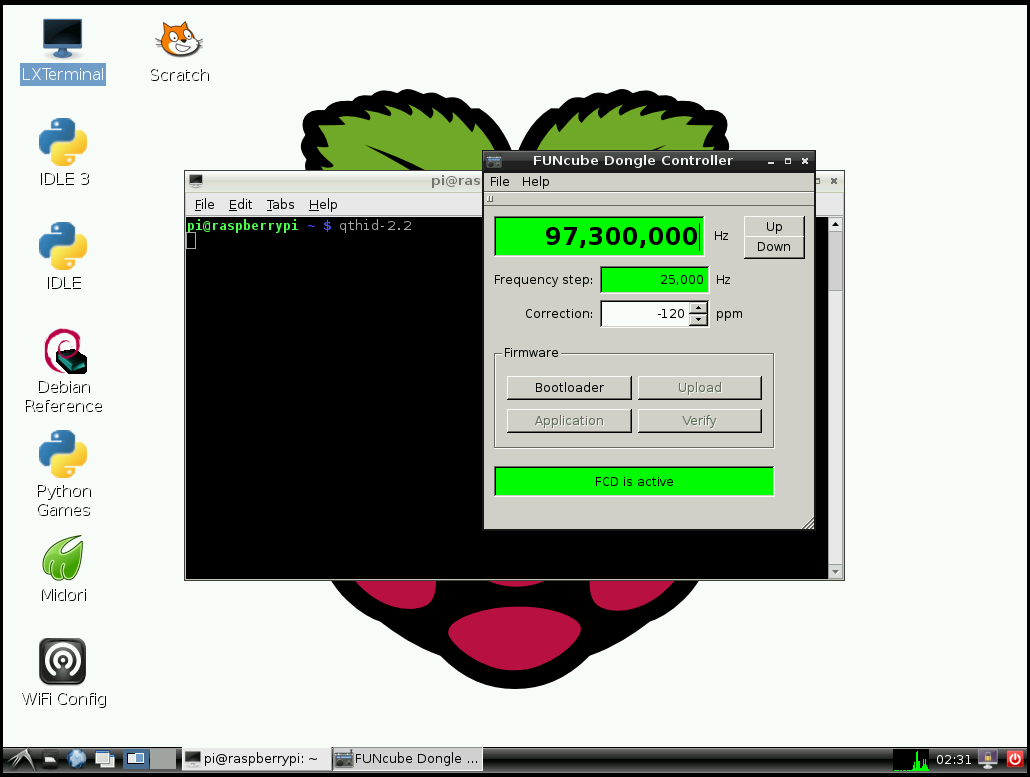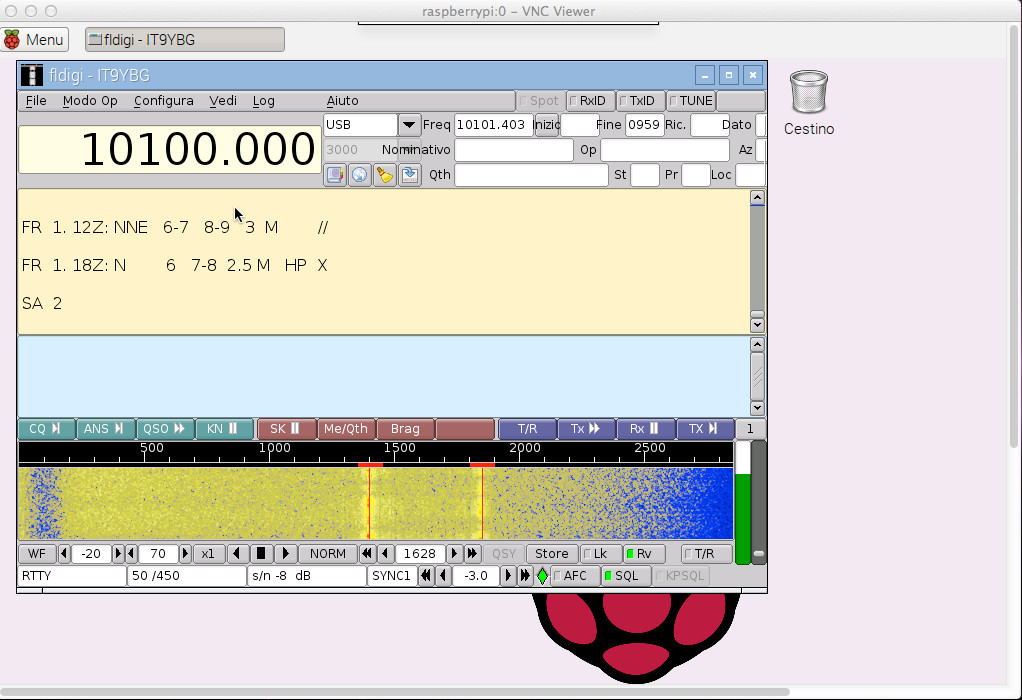
To preset the pins and levels on the UDRC™ we provide a script.If you do not see it listed, power down and remount the UDRC™. (that's a lowercase l) and observe that udrc is listed as a card. From a terminal command line, verify that the UDRC™ is recognized by typing the command.The following notes are included for reference only as FLdigi comes pre-installed on the NWDR image

Subdevice #0: subdevice #0 Startup and set levels in fldigi Station Information If you commented out the internal sound chip, as suggested in the Basic Installation notes, only the UDRC will show, otherwise you will see a reply similar to: card 0: ALSA, device 0: bcm2835 ALSA Ĭard 0: ALSA, device 1: bcm2835 ALSA Ĭard 1: udrc, device 0: Universal Digital Radio Controller tlv320aic32x4-hifi-0 NOTE: FLdigi is pre-installed on an NWDR image Verify that Raspberry Pi OS is seeing the UDRC aplay –l
Fldigi raspberry pi 3 install#
Universal Digital Radio Controller Install NWDR SD Card Image Make sure the pins are properly aligned and use the supplied standoffs to support the board above the HDMI port.

This includes the A/A+, Zero, Pi 1 B/B+, and Compute Module. Mount your UDRC™ on a Raspberry Pi 2, Pi 3, Pi 4 or Pi 400ĪRMv6 Raspberry Pis are not supported.
Fldigi raspberry pi 3 full#
You’ll soon have an image folder full of stuff like this. That’s it! Tune your wireless in to one of the frequencies in the list I posted above and wait. My radio ‘sweet spot’ is at 1,500Hz so I tune 1.5kHz below the transmit frequency and set the radio filter down to 1,000Hz as can be seen above. Most sites I’ve found suggest tuning your radio to 1.9kHz below the transmit frequency but it really doesn’t matter, as long as you have a good signal in the waterfall and you set the two red vertical lines on top of it. This is to ensure the picture is vertical and doesn’t slant. Set LPM (lines per minute) to 120 in the box below the receive window.įor UK reception, I’ve found the Slant figure needs to be at 0.0071 and for Germany, set it to 0.0118.

Make sure you hit the Save box at the bottom. If you switch between the two transmitters, remember to change this figure. For Germany, put 850 in the Frequency shift box or leave it at 800 for UK reception. This is changed through Configure / Operating / Active Modem, select the Other tab on the second row and then the Wax tab below it. If you are receiving signals from Germany then the shift is 850Hz instead of the default 800Hz. If you want to use fldigi to receive WEFAX, you need to do the following: fldigi receiving a WEFAX image from the Northwood transmitter This morning I switched to the Northwood frequency of 4,610.000 kHz and very soon the pictures started rolling in. The 3,855.000 kHz signal seemed about the best for me here. I first started listening on the UK frequencies but heard nothing so I switched over to Germany and over the course of the week, I received a lot of pictures. There are two in Europe that I decided to try listening for, one in the UK at Northwood and the other in Hamburg, Germany. A quick search around and an ask via Twitter pointed me towards this document which lists various transmitting stations around the world. I soon had it configured correctly and so the next stage was to find what frequency the WEFAX pictures are transmitted on. I use fldigi for operating data contests so I’m very familiar with it.

I know that strictly this isn’t amateur radio in the true sense because these transmissions aren’t within our frequency allocations but it’s still interesting.Īfter very little searching, I discovered that fldigi can receive fax pictures. I’d tried a couple of years ago to receive satellite weather pictures with little success (due to a very poor aerial) and the idea that I can receive weather maps on HF intrigued me. This grabbed my attention because I like maps and I like to see things to do with the weather. A week or so ago I saw a weather fax ( WEFAX) picture someone had posted that they’d captured on HF.


 0 kommentar(er)
0 kommentar(er)
